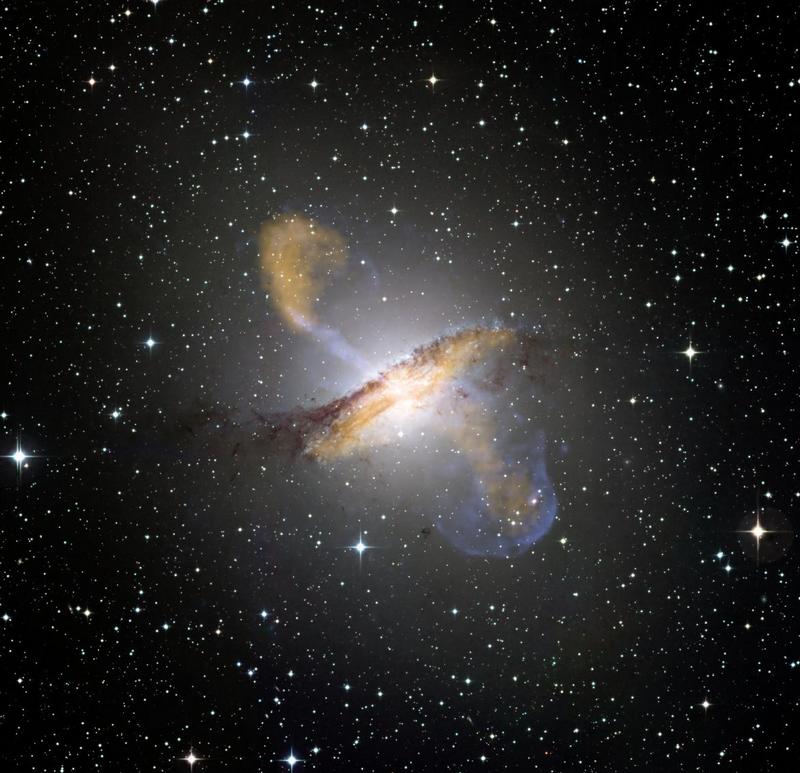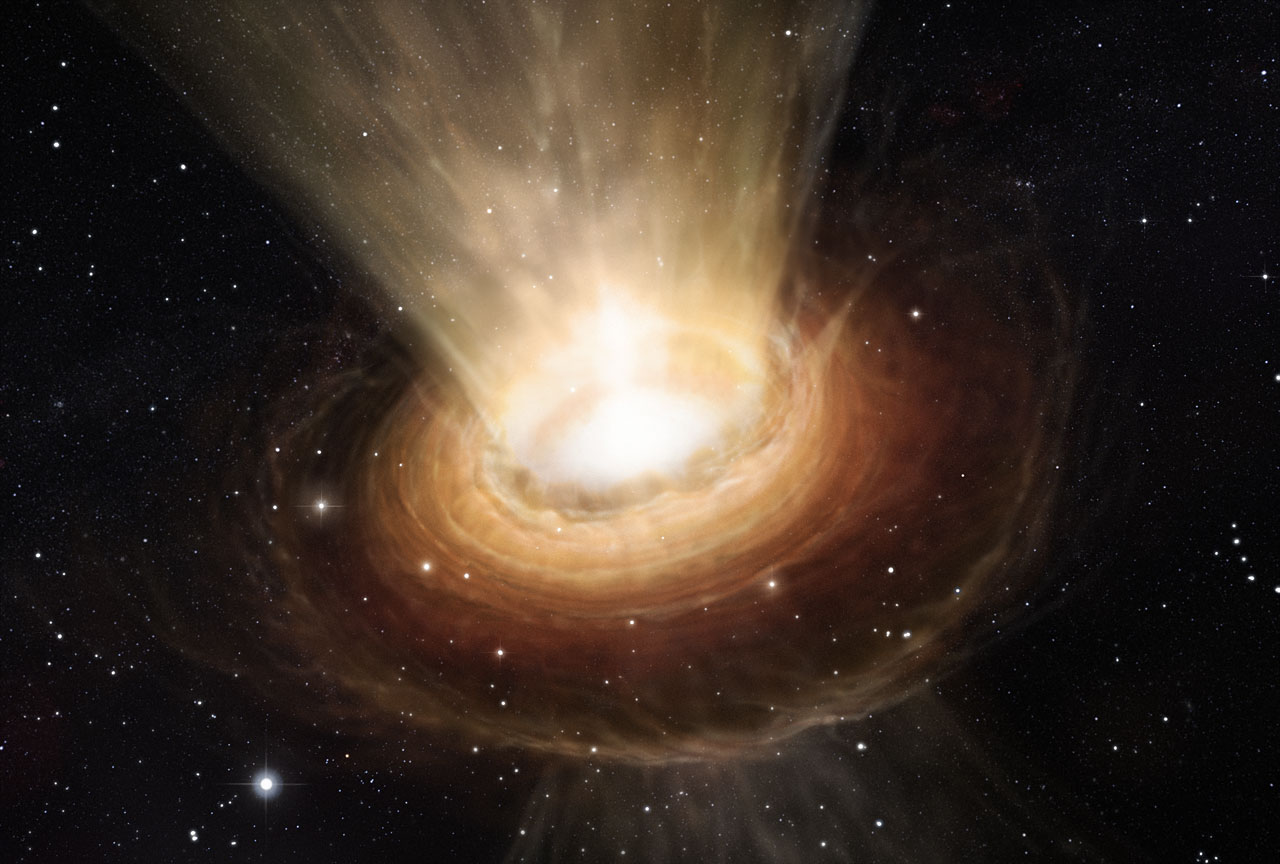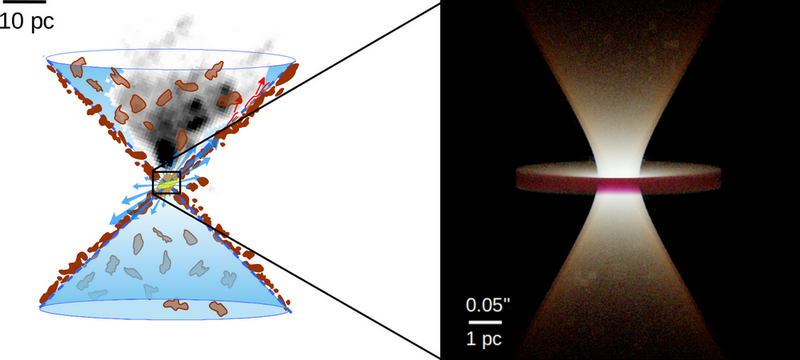About our Research
INTRODUCTION
What are Active Galactic Nuclei?
It is well established today that every massive galaxy hosts a supermassive black hole at the center of its nucleus. The phase during which a supermassive black hole considerably grows by accreting the surrounding material is commonly referred to as an active galactic nucleus (AGN).
This accretion, which takes place via a thin disk formed close to the black hole, results in a number of highly energetic phenomena that can outshine an entire galaxy.
These episodes of powerful nuclear activity are relatively short compared to the lifetime of a galaxy, but may play a crucial role in shaping them. Indeed, a number of observed correlations between AGN and galaxy properties indicate that AGN and their host galaxies co-evolve and regulate the growth of each other.
Galaxy mergers or secular processes (such as instabilities in the disks and bars of the galaxies) can bring material into the vicinity of a black hole and trigger its activity, stemming from the conversion of gravitational potential energy to strong radiation. The activity manifests most evidently as a strong continuum emission peaking at UV/optical wavelengths, with a number of characteristic emission lines superimposed.
Roughly half of this primary emission is intercepted by dust and re-emitted thermally in the infrared. At the same time, the AGN can exert strong feedback and halt the accretion of gas onto its host galaxy or suppress star formation.

Thus, to understand galaxy growth and evolution, we need to understand the phenomenon of AGN: what are they and how do they work?
supermassive black holes in the centers of galaxies
how do they work?
A number of related questions are still not understood well enough: How exactly AGN affect their hosts – is the dominant feedback mechanism of mechanical or radiative origin?

We commonly see signatures of outflows driven away from AGN in a form of a ‘wind’, but do they carry enough energy and momentum to affect star formation on galactic scales or to expel the material from the galaxy? What are the mass outflow rates and velocities? Are they optically thin or thick? Do these winds carry dust that could affect our observations by scattering and absorption? Dust enters the total mass budget with a small percentage, but due to the high cross-section for interaction, it is very efficient at absorbing primary UV/optical radiation and thus, significantly affects the appearance of AGN depending on our line of sight and can introduce biases due to the wavelength-dependent extinction.
Thus, the above questions are tightly related to the structure of the obscuring dusty material in the vicinity of AGN. This structure is likely to play a role in collimating the accretion disk emission and outflows, but it is unclear at which spatial scales the collimation occurs. Another fundamental mechanism that plays a role in shaping of AGN surroundings could be outflowing winds, driven by strong pressure exerted by the accretion disk radiation on dust particles, that can effectively remove the dust from a local doughnut-shaped reservoir assumed by the standard AGN unification model (the ‘dusty torus’).
Under which conditions can the dusty winds be launched? Will they be able to expel the material out of the sphere of black hole influence or will it fall back and re-enter the accretion cycle?
To tackle the above questions, first and foremost, we need to establish whether or not the dusty winds are ubiquitous and their basic physical properties! It is exactly this that we will investigate in the BOWIE project.
Going forward
What do we need to advance?
Recently, some new observational evidence hinted at the existence of prominent dusty winds in nearby AGN. Motivated by these tantalizing claims, in two recent works we studied in great detail mid-infrared emission of AGN in the Circinus galaxy resolved by two instruments at Very Large Telescope: interferometer MIDI (probing scales of a few parsecs), and imager and spectrometer VISIR (probing tens of pc scales). Circinus is one of the nearest and best studied objects, representing an archetype of obscured AGN and showing hints of dusty winds.
By radiative transfer modeling, we ruled out a canonical dusty torus and showed that only a small fraction of warm dust is settled in a rather thin disk, while a major part is found roughly perpendicular to the disk, in a form of a hollow cone and likely driven away to large scales by radiation pressure. In the meantime, we acquired new data from two other VLT instruments, NACO and FORS2; will use these data to probe the dust structure in Circinus in more detail and will serve as another independent test of our model.

As the next step, we will test whether this model can explain the observed morphology of a full sample of ~30 objects that show similar hints of dusty winds.